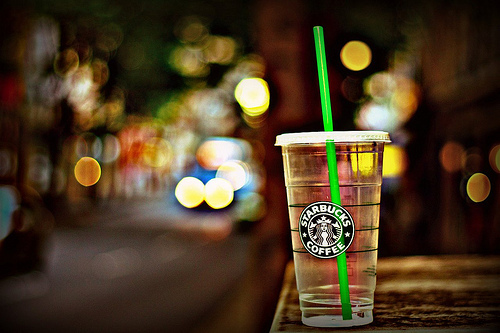What is fair and lovely foundation?
Fair
& Lovely Scholarship Foundation is an HUL (Hindustan Unilever Limited) initiative
that aims to empower the women of India through education and career
development before their marriage, which has been successful since 2003, the
year it was first started. The Fair & Lovely Foundation Scholarship helps
academically brilliant girls from the lowest economic strata of the society
fulfill their dreams of higher education. These young achievers are supported
with course fees, accommodation, local travel, books and stationary costs,
depending upon their needs. The scholarship is renewed every year on the basis
of the performance of the student. Also, it covers money capital, which is
helping aspiring women entrepreneurs start their own business.
The
recent advertisement, which was launched to promote the foundation for the year
2014, explains about girls looking for a well-settled groom. Instead, making
the girl independent is the main target area of this initiative. The foundation
identifies academically exceptional girls from financially challenged
backgrounds and offers scholarships up to Rs. one lakh per candidate. Deserving
candidates are selected through a screening-and-interview process. Panels at
the Fair & Lovely Foundation shortlisting phase includes noted
professionals from various fields, who carefully interview these girls across
five centers: Mumbai, Chennai, Kolkata, Hyderabad and Lucknow. Their level of
need and desire to excel is taken into account to select the final list of
awardees.
The foundation provides resources in education and business to
millions of women who use or support Fair & Lovely. Efforts have included:
• HUL sponsored
career fairs in over 20 cities across India
• Counseling in over
110 careers
• Supported 100 rural
scholarships for women students
• Created a
professional course for aspiring beauticians
·
Created a three-month Home Healthcare Nursing Assistant course
open to women from ages 18-30 years
Honoring women across India that have achieved greatness and set
good examples for others to follow.
Why did HUL come up with it?
The foundation was basically a strategy to come out of the
bad public image which fair and lovely had created for itself. Here’s how:
Until CavinKare’s fairever entered the market in 1999, Fair
& Lovely held a 90% market share for the product. Fairever gained an
impressive 15% market share since it began being sold in India, causing HUL to
respond with increase advertising efforts.
HUL instituted a huge campaign with a series of
ads that were centered around “the fairer girl gets the guy” theme. And various
other marketing theme where a girl’s beauty and fortune was shown to be based
on how fair she is. CavinKare counteracted these ads by taking a dig at HUL’s
strategy. They showed ads that encouraged women to be successful regardless of
their complexion, but rather more self-confident after using Fairever. The two
opposite approaches in advertising put HLL and Fair & Lovely in a bad
position to the public and press. The All India Women’s Democratic Association
(AIDWA) filed a complaint in March and April 2002 with HUL. The Ministry of
Information ruled that the campaign violated the Cable and Television Network
Act of 1995, which strives to ensure no ads promote discrimination on the basis
of gender, race, creed, color, caste or nationality.
As a result of the backlash against HUL’s Fair & Lovely
campaign, the company discontinued the ads in March 2003. Shortly after it
pulled the ads off the air, HUL launched a new charitable cause called the Fair
& Lovely Foundation, which vowed to “encourage economic empowerment of
women across India.”
Its impact:
Fair
& Lovely Foundation since inception in 2003; has played an integral role in
changing the lives of more than 1500 girls, giving them wings to achieve their
dreams by empowering them through education and career development. Through
these scholarships, Fair & Lovely opens doors of hope for girls across the
country to pursue their dreams. One of the 2012 scholarship winners, Sajneeben
whose father cuts and polishes precious gems has to support a family of five on
his meager earnings. While her mother, a housewife tries her best to give her
children the best of all worlds but the family income is insufficient to
support their three children. Sajnee who is studying hard to pursue her studies
in her chosen field of Bachelor of Ayurveda, Medicine and Surgery says, “With
the scholarship amount that I’ve received from the Fair & Lovely
Foundation, I’m confident that I’ll be able to overcome my financial challenges
and build a great career”. other 225 girls like Sajnee were awarded with the scholarship in the year 2013.
This also improved their brand image, showing fair and
lovely in a good light in the society. Even now, fair and lovely occupies a
major share in the market of fairness creams, nearly 53%.
Conclusion:
Fair and lovely did the mistake, which cost them a
fortune. The orthodox nature of Indians,
and hence by showing the fair and dark comparison the audiences were easy to
attract. This even though increased their sales also led to a huge negativity,
which resurfaced the minds of Indians. Though the thinking has changed now,
there still are many families, which do prefer a fairer bride or daughter or
wife than a woman with a darker skin tone. The companies should never forget
the impact it has on the society and should be very careful about its
actions. Also, a company before entering
a market should do a complete research about the culture, religions, how things
work out to be, etc. it helps a lot in knowing which are the target consumers
and also what are the means in which this could be possible. Though fair and
lovely was successful in knowing how it could increase its sale, the way was
not ethical. So, even that’s a challenge. But you have to accept challenges and
find a way out of it, even if a mistake; just like how fair and lovely did. ;)









